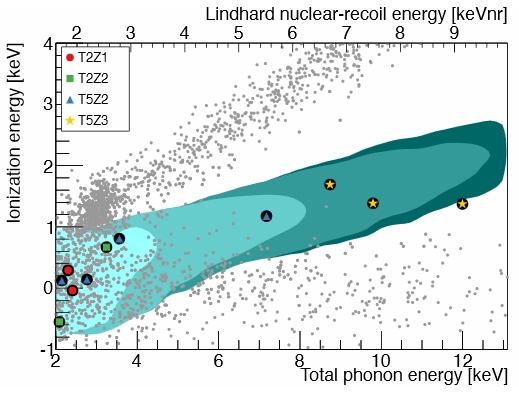The detector is composed of fifteen cylindrical 0.6 kg crystals stacked in groups of three, equipped with ionization and phonon detectors that are capable of measuring the energy of the signals. From that the recoil energy can be derived, and a rough estimate of WIMP candidates mass. The towers are kept at close to absolute zero temperature in the Soudan mine, where backgrounds from cosmic rays and other sources are very small.
The search revealed a total of 11 phonon candidates, when 6.1+1.1-0.8 were expected from the considered background sources. This is only a mild excess, that happens by chance more than once in twenty trials (p=0.065). However, one of the seven considered detectors saw 3 energetic events, while its background prediction was of only 0.13+0.06-0.04 events. According to the CDMS paper this corresponds to a 4x10^-4 probability (I calculate 0.00054). That's a 3.4 standard deviations effect, but do not get excited...
In fact, the paper is careful to point out that the excess (three high-energy events) concentrates in the only detector which "has a ionization guard electrode shorted to ground". They suggest that their background prediction was therefore possibly incorrect.

The graph above shows the detected energy of the 11 candidates, compared with a model of possible signals from WIMPS of masses between 5 and 15 GeV. The three events detected by the "shorted" detector are in yellow.
The interim conclusions of the search (which is ongoing) are that a number of tentative signals observed by other experiments are strongly disfavoured; these include CoGeNT and CDMS II.
For more information please see the preprint.



Comments